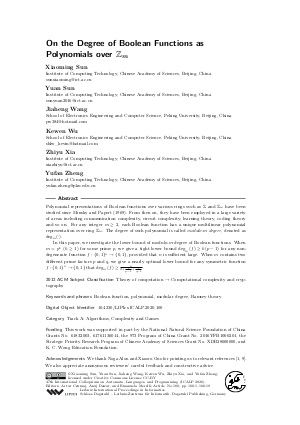LIPIcs.ICALP.2020.100.pdf
- Filesize: 0.54 MB
- 19 pages

 Creative Commons Attribution 3.0 Unported license
Creative Commons Attribution 3.0 Unported license










Feedback for Dagstuhl Publishing